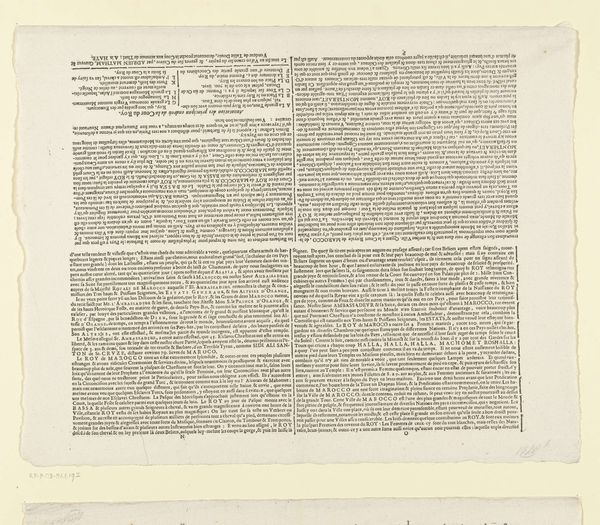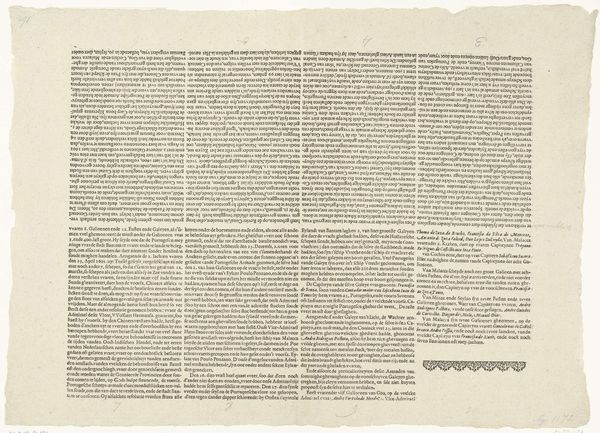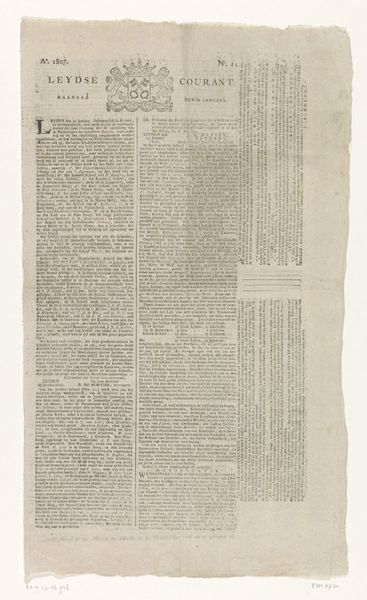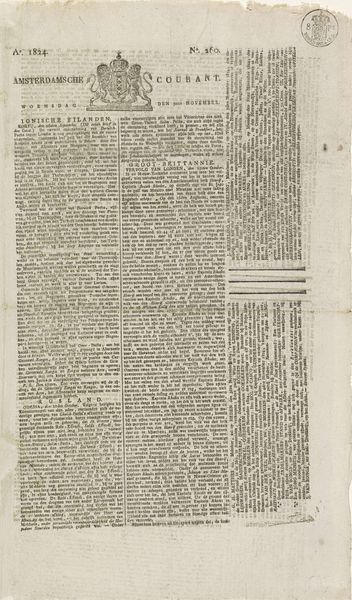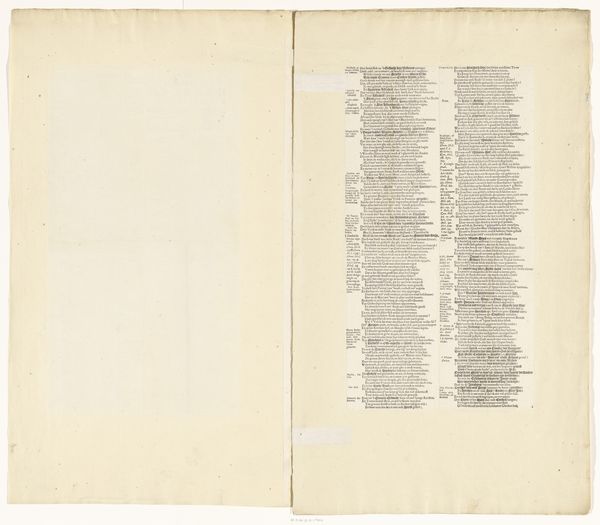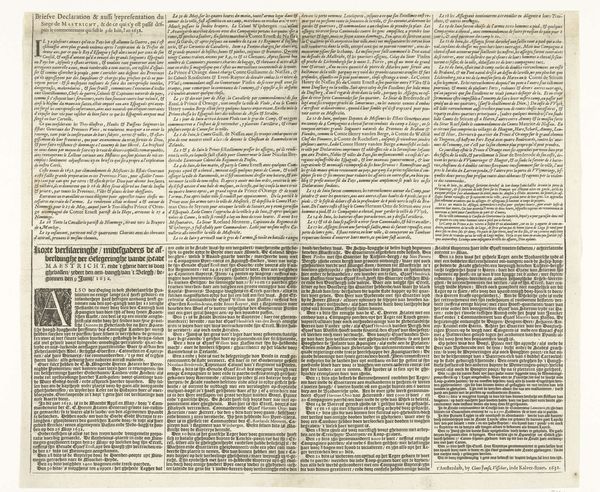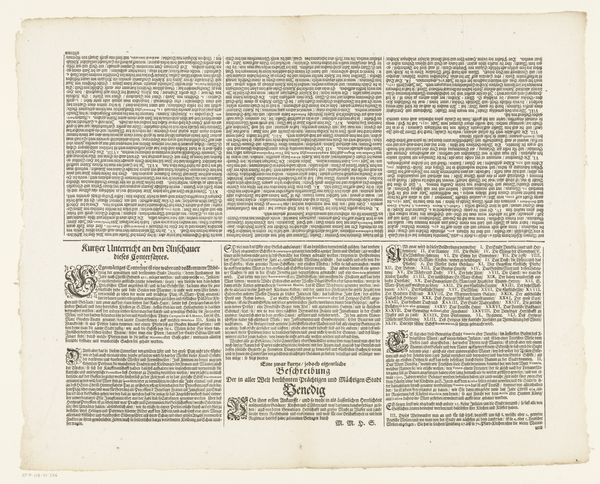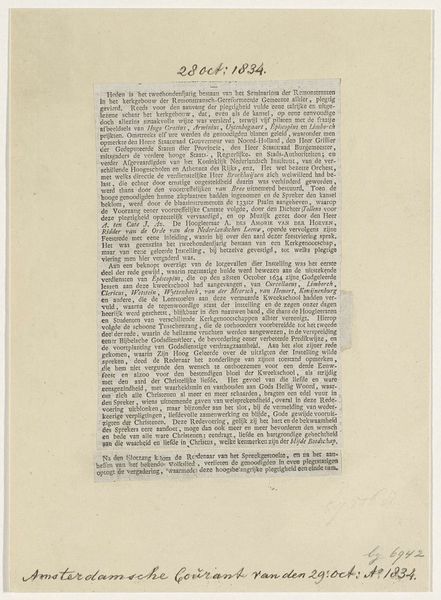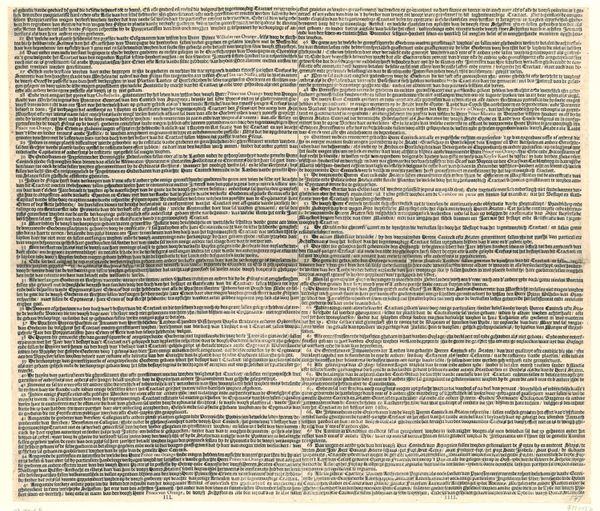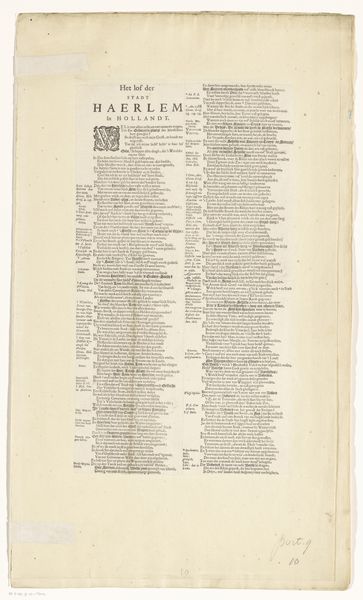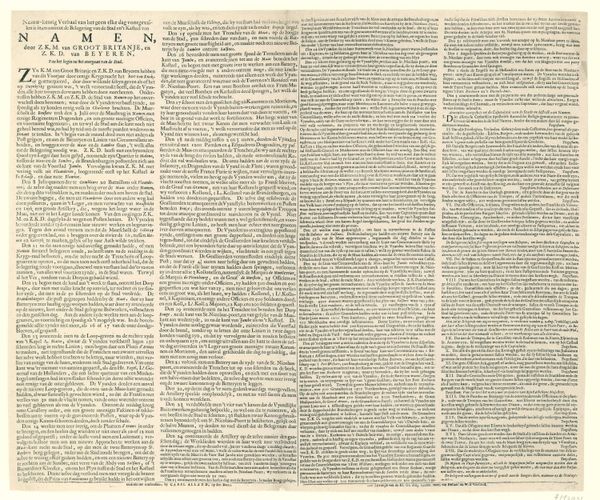
print, paper, typography, engraving
#
baroque
# print
#
paper
#
typography
#
engraving
Dimensions: height 280 mm, width 360 mm, height 343 mm, width 430 mm
Copyright: Rijks Museum: Open Domain
Curator: Standing before us is a print titled "Onderschrift van de Festa della Sensa (derde en vierde gedeelte)" dating back to 1697. It resides here at the Rijksmuseum and is attributed to Jost Amman. Editor: My immediate impression is of overwhelming detail, an almost intimidating density. It's essentially a landscape of tightly packed typography. Curator: Yes, Jost Amman primarily worked with prints and engravings. This particular work is an engraving on paper featuring a substantial amount of typography, related to the Venetian "Festa della Sensa" – the Feast of the Ascension. It documents a significant state ceremony celebrating Venice's maritime power. Editor: Thinking purely in terms of form, there’s a starkness to the monochrome. It makes me focus on the texture of the paper, the crispness of the engraved lines and letters. Curator: The “Festa della Sensa” was loaded with political meaning. Venice projected an image of power through elaborate rituals, cementing its role in the geopolitical landscape of 17th-century Europe. Jost Amman, however, lived during the sixteenth century and this document must be related to his influence rather than being the artist. Editor: So the engraving functions, on one level, as propaganda. Beyond its immediate message, you can appreciate how effective the grid of text becomes as a pure visual structure. It makes the image surprisingly modern. Curator: It reflects a culture deeply invested in written contracts and civic obligations. The detailed accounts embedded in these works highlight how ritual legitimized Venetian authority, especially in the Republic's dealings with other powers. Editor: I find it so compelling how the print transforms the details of Venetian statecraft into an austere, visually unified composition. Despite its prosaic content it achieves a near abstract quality. Curator: Analyzing this artwork highlights how political rituals were recorded and circulated, forming collective memory. By connecting us to Venice's past, prints like these deepen our understanding of nation-building through cultural display. Editor: The work challenges how we understand a seemingly simple document. Thank you. Curator: Thank you.
Comments
No comments
Be the first to comment and join the conversation on the ultimate creative platform.

